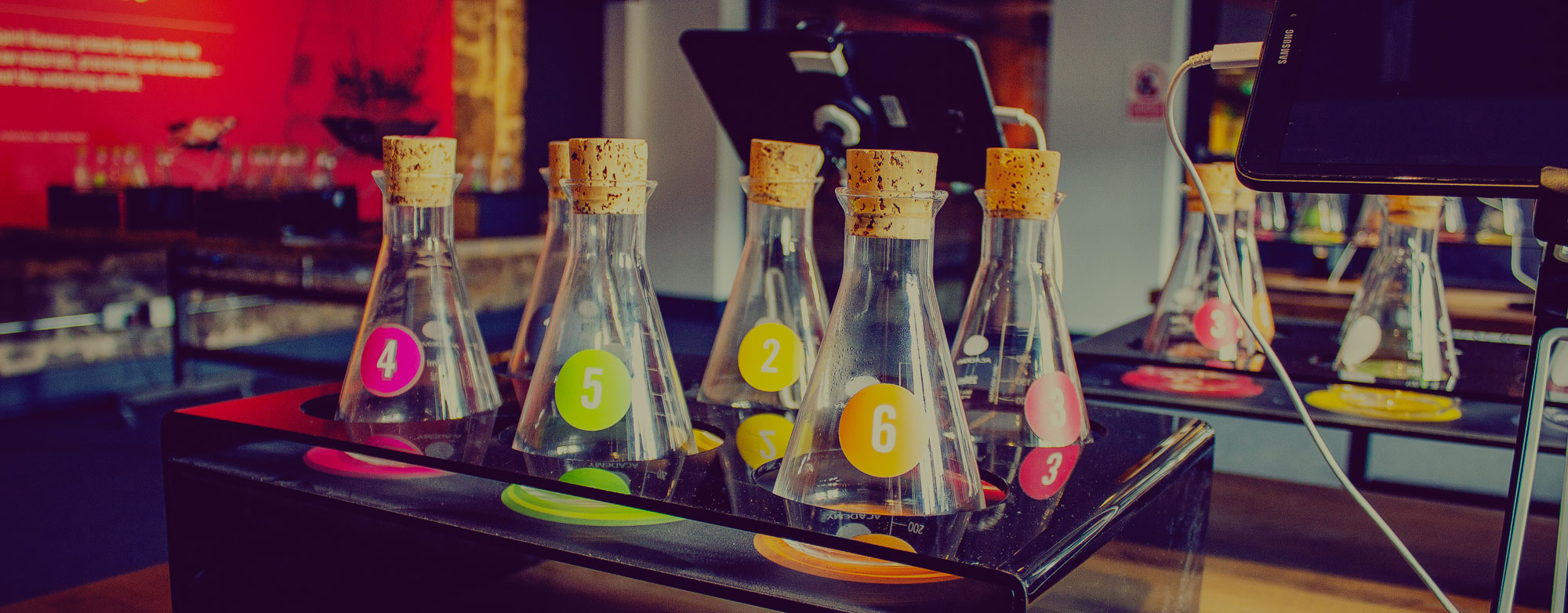
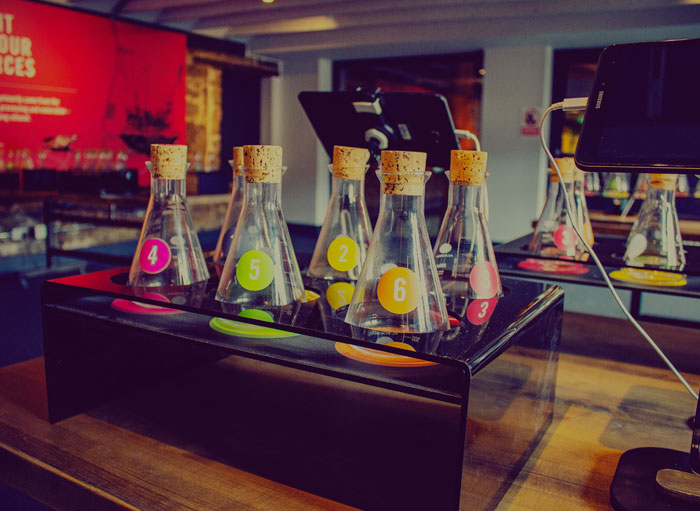


In our Discovering Scottish Gin editorial feature, we ask the members of our Scottish Gin Consumers Group on Facebook to submit questions for a chosen Scottish Gin maker. In this feature we asked our group to pose their questions to Holyrood Distillery, Edinburgh’s newest distillery.
The team behind Holyrood Distillery have lovingly and sympathetically restored the 180 year old building to create not only a working distillery in the heart of Edinburgh but also a fully immersive visitor experience, with a variety of tours available for both gin and whisky lovers, a tasting room and shop.
Our loyal Facebook Group members did a great job and came up with some cracking questions for the distillery team. As an added extra, we offered a prize for the best question… a bottle of signature Holyrood Dry Gin. The team at Holyrood chose, and answered, their favourite question, which is revealed below. Thanks to everyone who took part and the Holyrood Distillery team for taking the time to answer those burning questions!
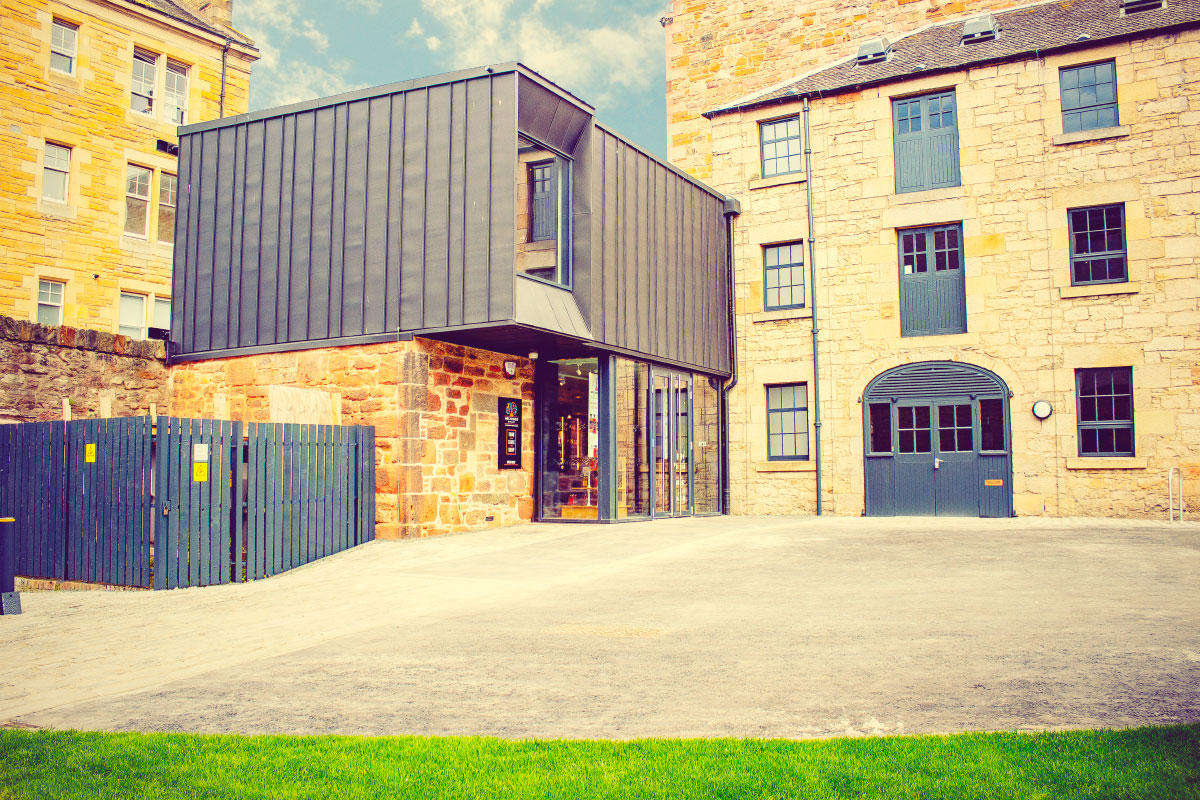
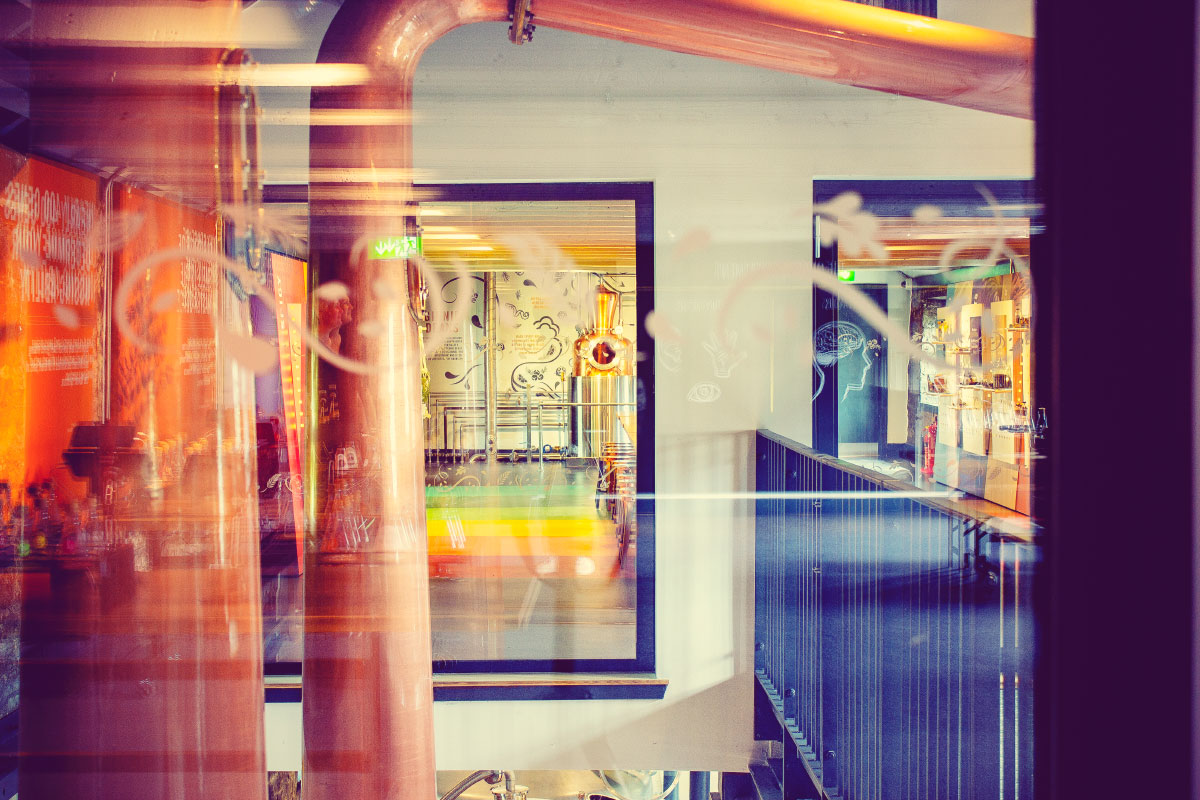
How does your story of the birth of your distillery stand out head and shoulders above everyone else? (Bronwyn Gall)
The distillery was born out of love of the distilling world and the pursuit of breaking the boundaries of flavour. David and Rob, both with a long history of distilling and whisky, set out to create a place where not only flavour could be explored in all its aspects but also where people could come and learn about what flavour is and how to achieve it.
I think having the contrast of gin and whisky in the same building is quite exciting, as it shows a visitor the differences and what goes in to each process.
The passion and knowledge of the team also shows, with our head distiller Jack having designed the gin still housed in Holyrood Distillery.
Elizabeth Machin, Distiller
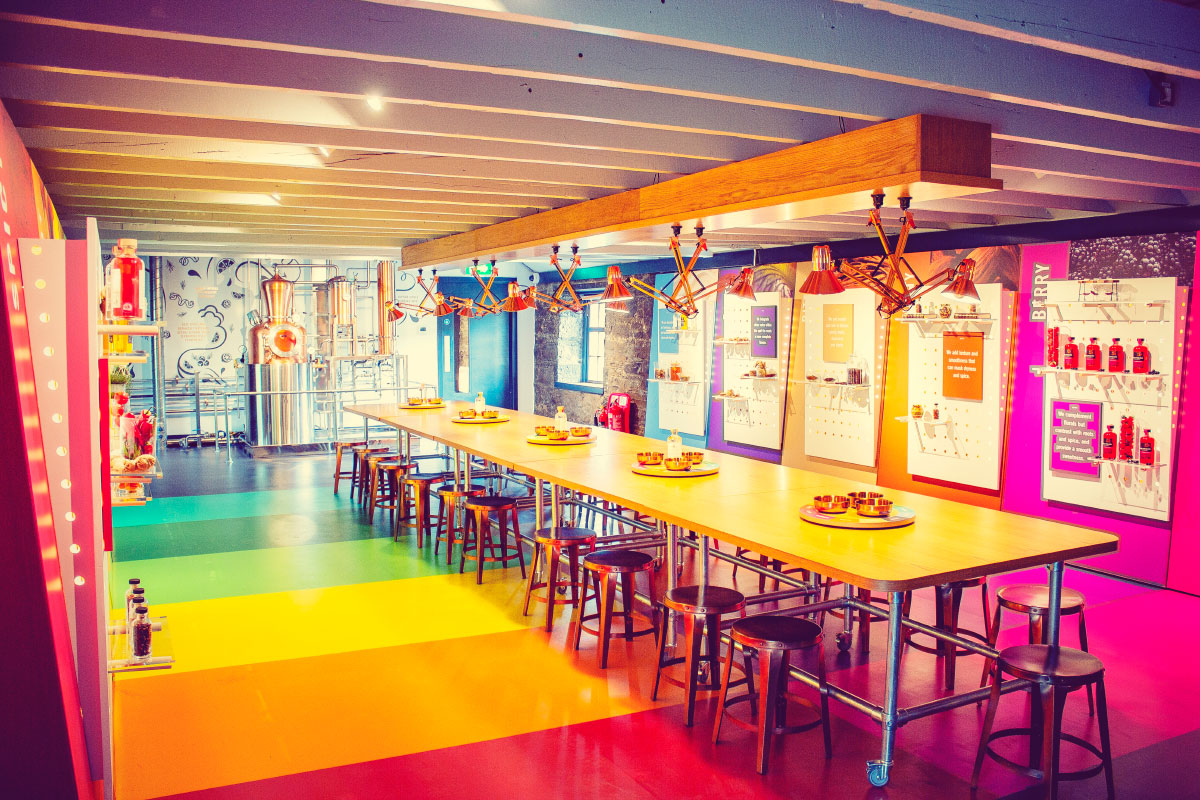
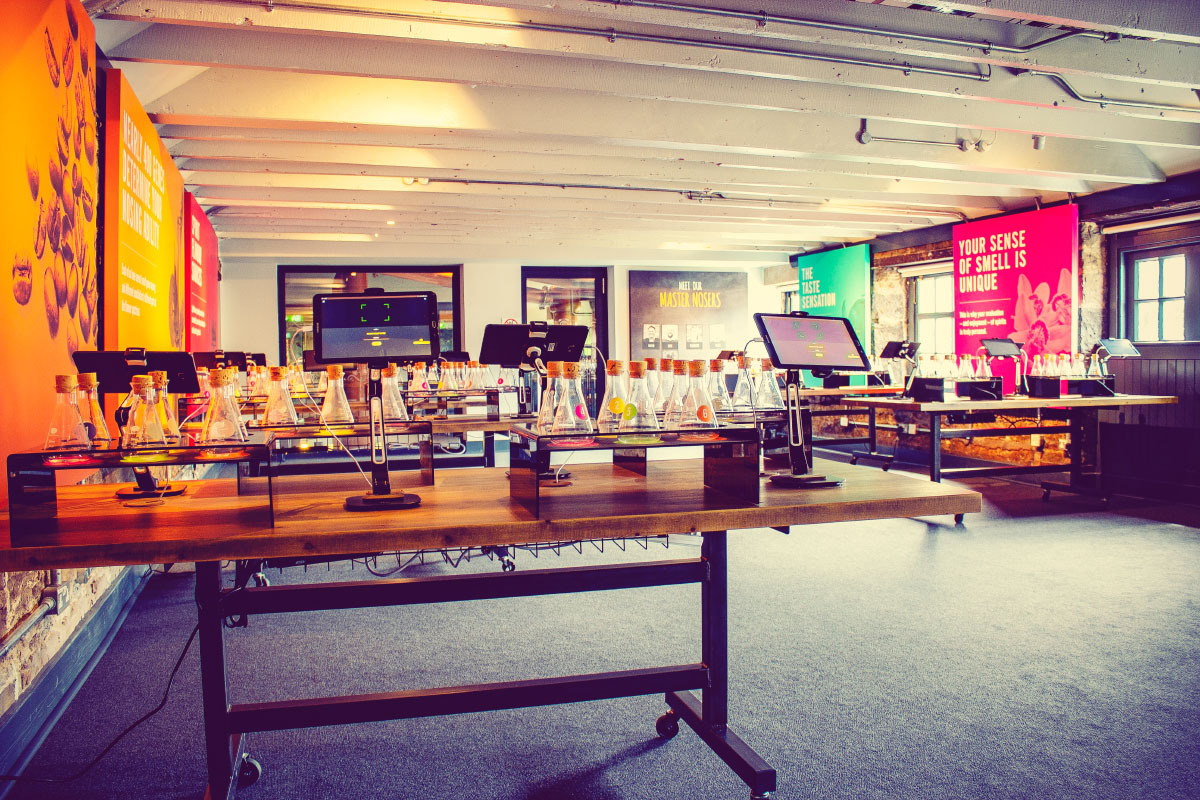
What do you hope people will take away from a visit to your distillery and how is it different from other Scottish distilleries? (Pamela Lorimer)
Our distillery is built around a visitor centre. With the visitor experience we hope that people not only enjoy the tour, but learn both about the gin and the whisky making process, as well as learning about aroma and flavour. All this whilst also enjoying a dram or two!
One of the big reasons we stand out is our pursuit in flavour and making flavour matter to each and every visitor. We aim to produce a number of different products within each range so that there is a flavour for everyone and we are keen to help everyone to find what they like!
Elizabeth Machin, Distiller
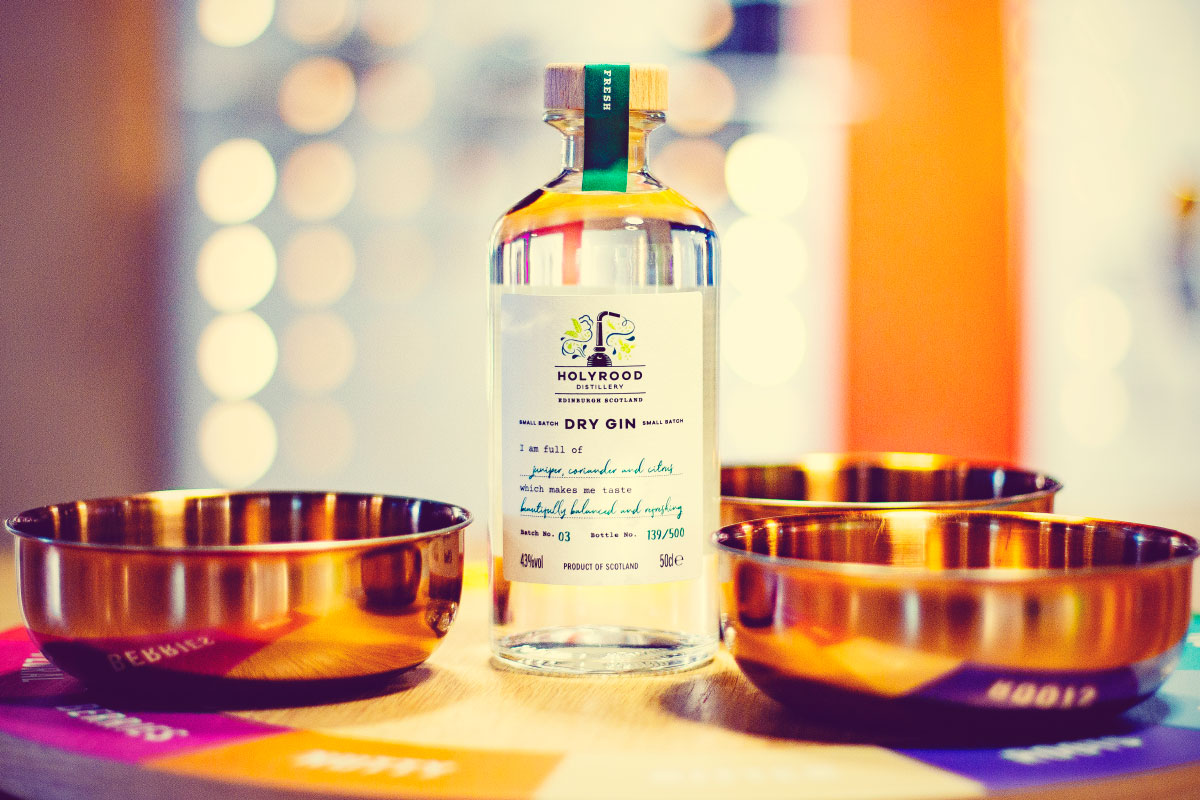
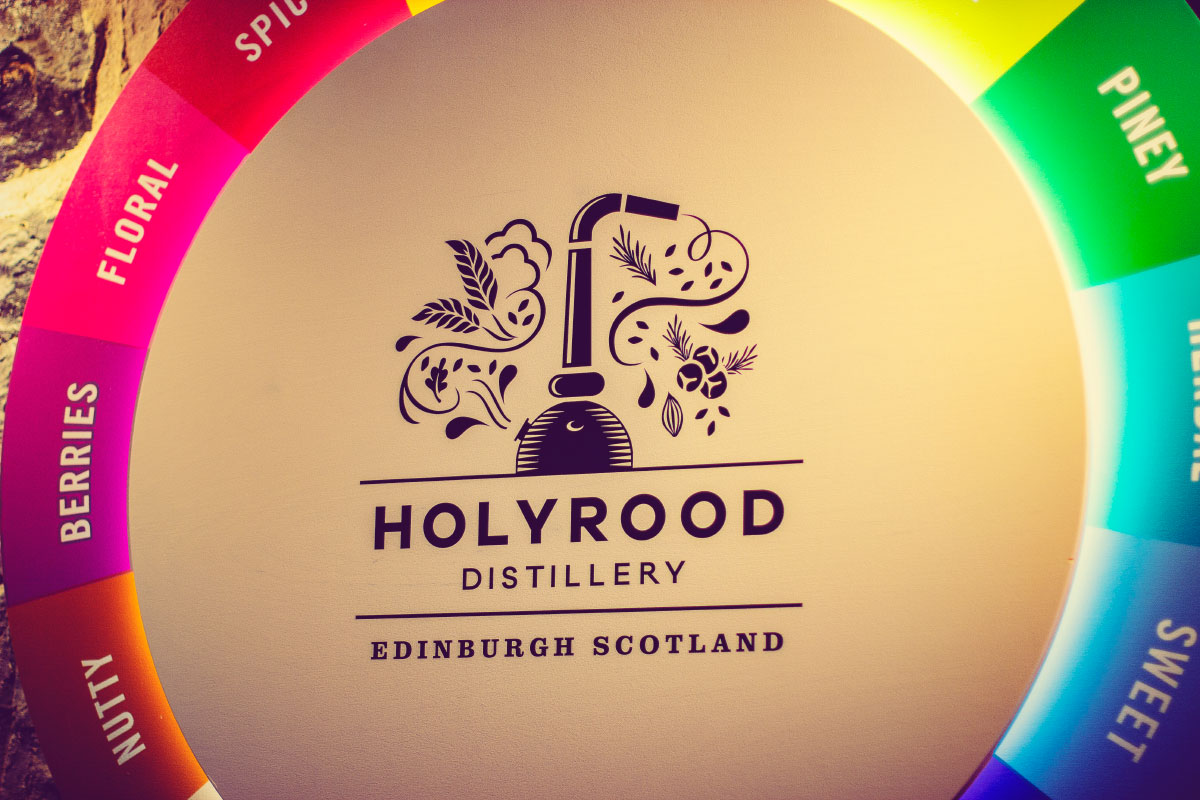
How do you find out what gin flavours will work and where does your inspiration come from? (Klayre Hurnn)
Finding what flavour works is a mixture of knowledge and art. You need to know your botanicals and have experience with how their flavours will unfold through distillation. The art is making sure the botanicals you use will marry in a way that will produce outstanding and flavourful gin.
Inspiration comes from many places, I tend to find inspiration taking long walks with my dog on the weekend and finding fruits and botanicals that I then want to use in gin!
Elizabeth Machin, Distiller
Once your first batch of whisky has been bottled, do you plan on producing a cask finished gin? (Monnika Chapman Morey)
We’ll be hoping to produce cask finished gin before the whisky is bottled – it will take at least three years for the whisky! For cask finished gin, we can look at lots of different woods, not just oak. No concrete plans yet, but we’re interested in Cherry, mahogany, birch, chestnut, mulberry, juniper wood and ash, all of which are used in different drinks and food industries. Once we’ve emptied our first whisky barrels, I’m sure we’ll want to age some gin in the ex-whisky casks as well.
Ollie Salvesen, Distiller
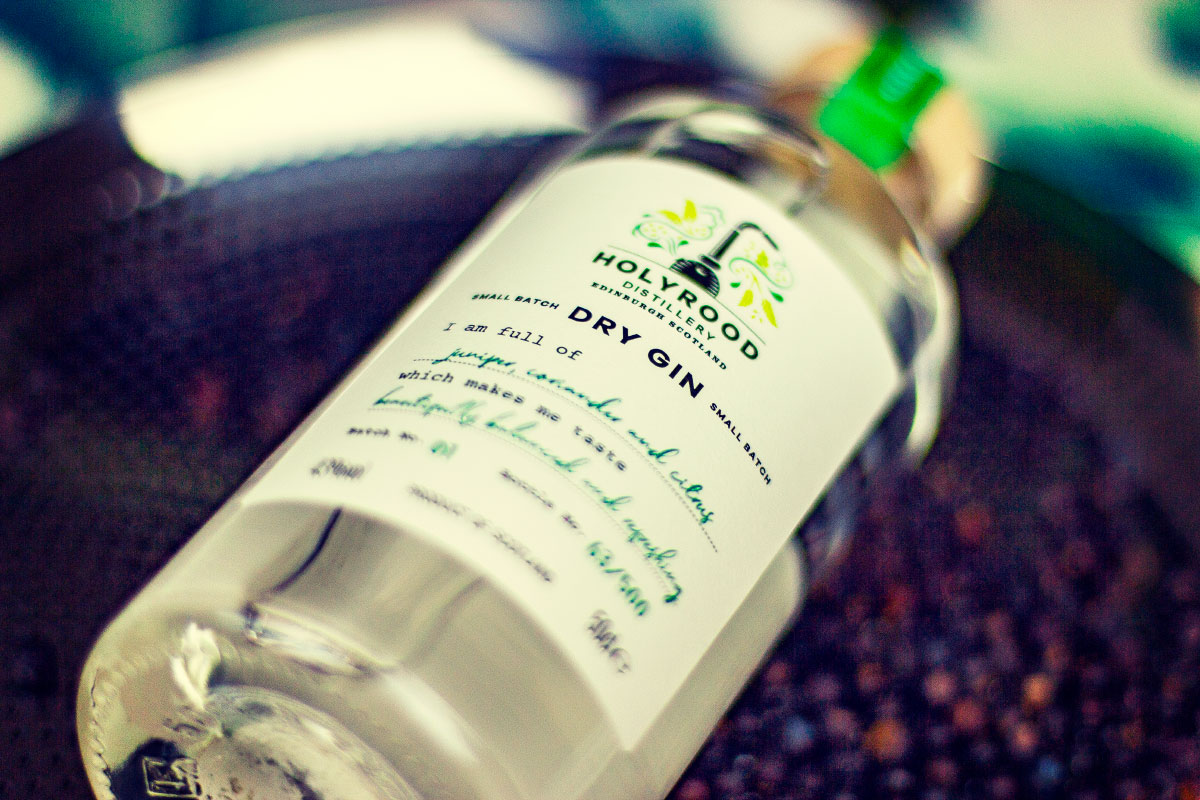
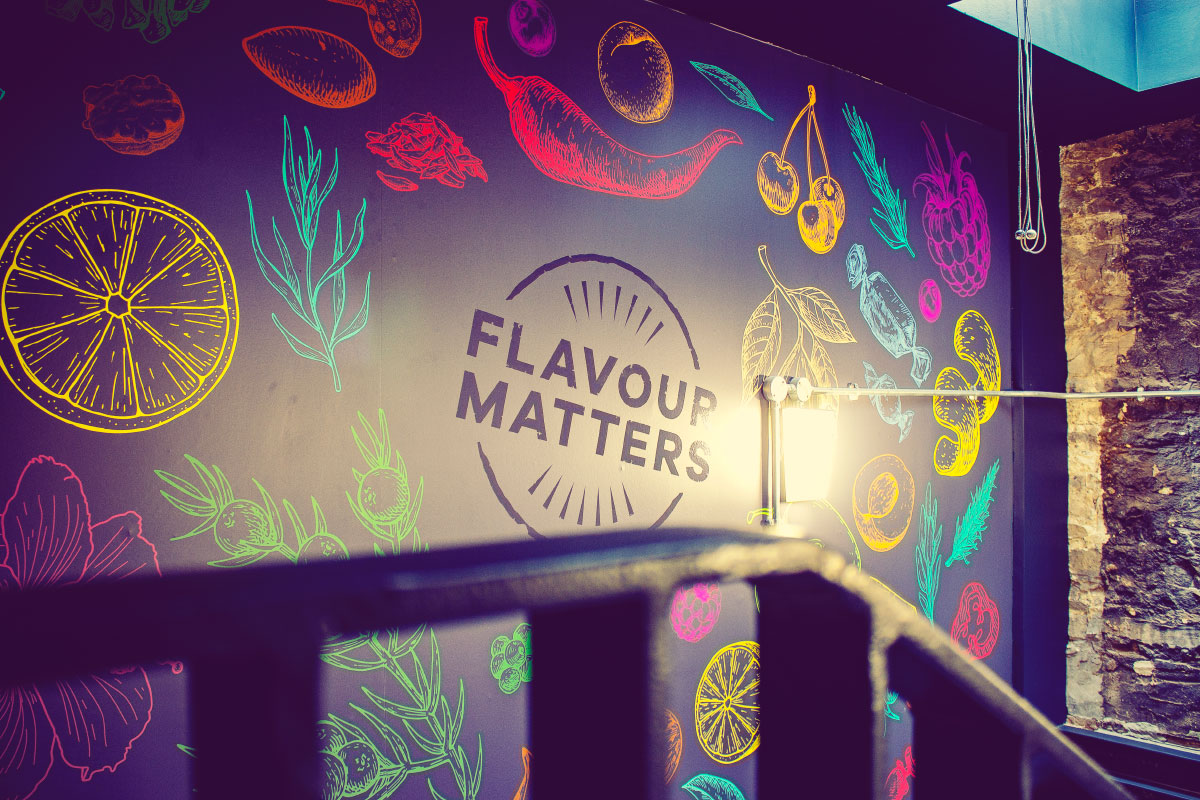
What four words would you use to convince me to try your gin please? (Sharron Wilson)
Flavour, Fun, Fresh, Delicious.
Ollie Salvesen, Distiller
Full on Flavour Experience.
Elizabeth Machin, Distiller
Do you use natural colouring and flavouring? (Lee Phillips)
All the botanicals we use are natural, and come in their original form (or sometimes, already ground into a powder for us), and where we think it makes a difference to the flavour, fresh botanicals, such as the whole fresh cherries in our spiced gin. Our pink gin is naturally coloured with rose petals and hibiscus flowers.
Ollie Salvesen, Distiller
How long does the whole process take to make a bottle? (Tracey Bright)
The first day is calculating the weight of botanicals we need for the batch size and weighing them out. Each of our gins has 10 botanicals, and we might have more than 30 kg of juniper in a batch, so this actually takes a while! Our botanicals are then delivered to the distillery from our warehouse on the edge of Edinburgh. The next day, we’ll put everything in the gin still and get it up and running first thing. The run will take around 5 hours, and by the time we’ve got everything else organised, it won’t be until the next day that its ready to take back to our warehouse and bottling line. There, we work out how much water will bring it down to bottling strength (43% for our Dry gin). Once we’ve mixed everything together, we’re ready to bottle it – in just 4 days.However, the reality is it might be in the container for a few days, especially if the warehouse team are busy with whisky casks, or they might be waiting for a batch of our other gins so they can bottle everything together at the same time.
Ollie Salvesen, Distiller
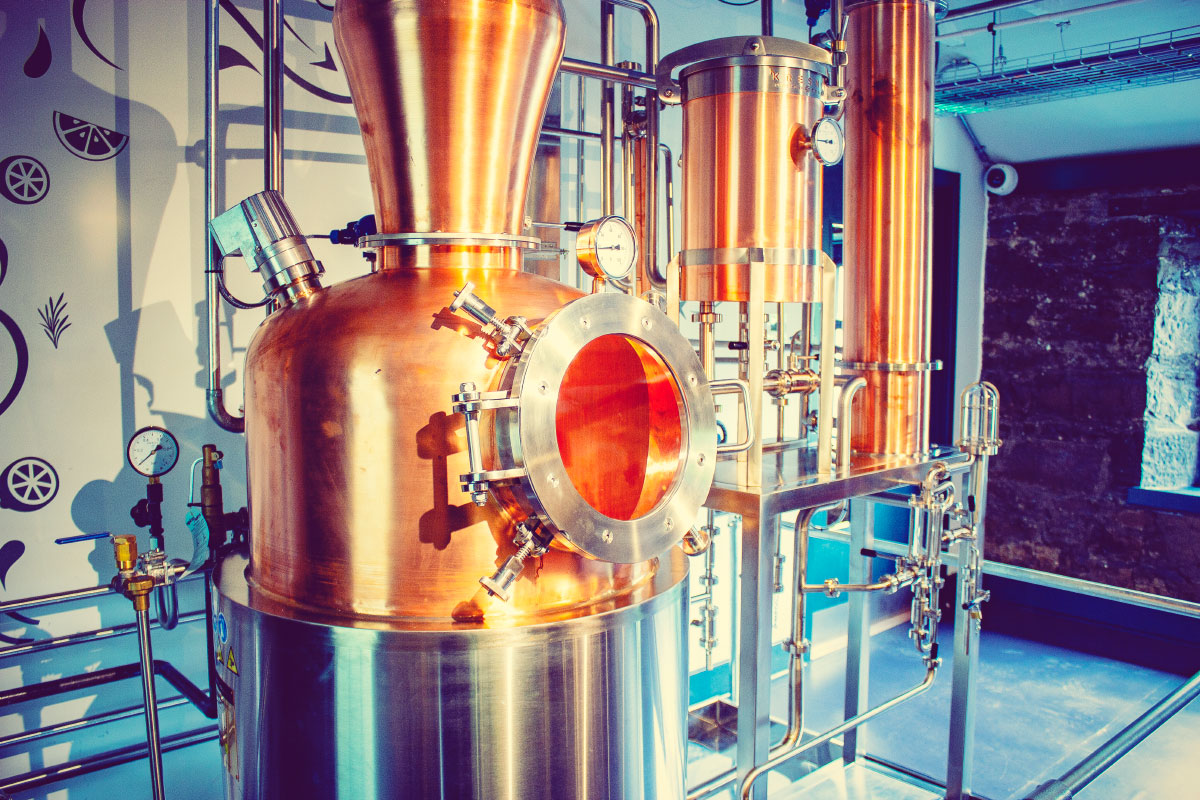
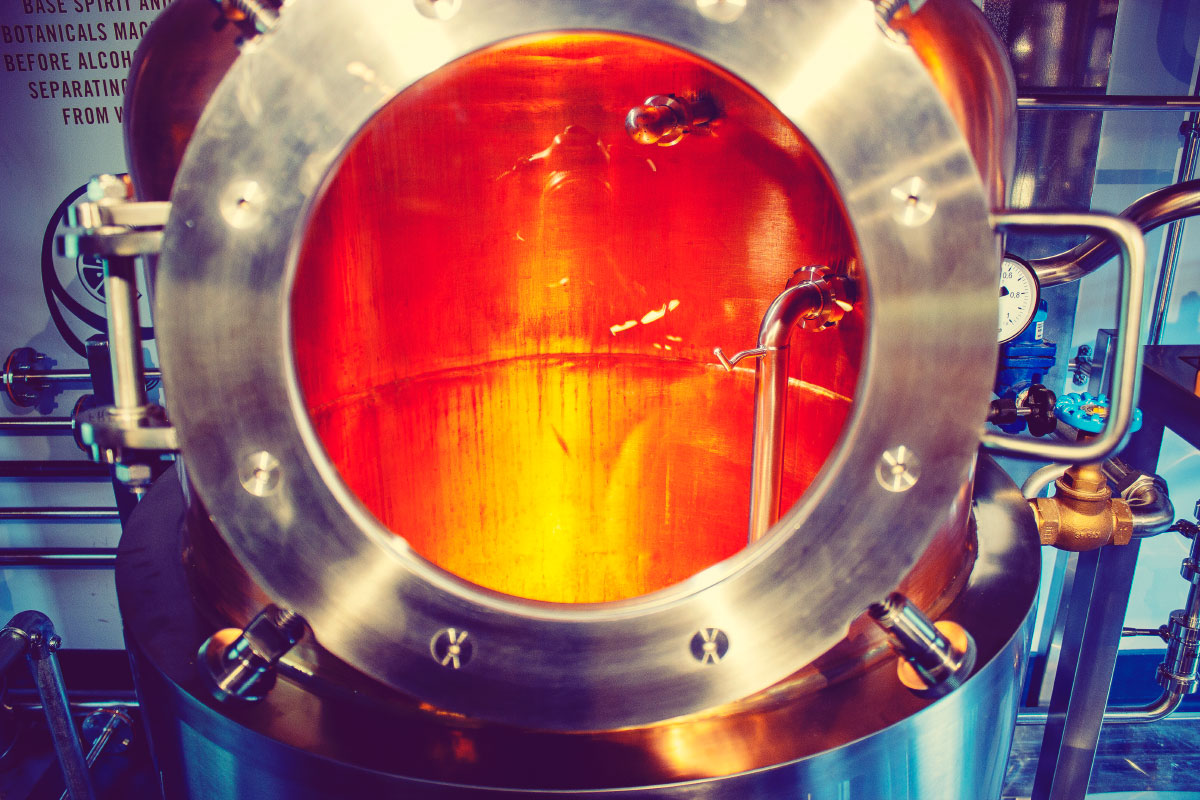
I want to know how your retort tank works?! I did the tour and this bit was one thing the guide couldn’t tell me on the day! (Katie Hughes and the winning question!)
Katie this is a great question! The retort essentially adds another distillation, though not as much as putting all the liquid into another pot still (such as a triple distilled whisky). We have a retort on our whisky spirit still, also known as a ‘purifier’ in some distilleries, although they are pretty rare in Scotland. The gin basket on our gin still can also be used as a retort, allowing us to do some interesting and clever things that we think is unique to our gin still in Scotland.
During distillation, some of the alcohol vapours will condense inside the retort, filling it up. The vapours from the still enter the bottom of the retort, so as it fills up with liquid, the vapours coming in have to raise up through the liquid. This helps pull out some of the harsher flavour compounds, and encourages only the lighter vapours to make it to the top of the retort and through into the condenser, where it becomes our new make spirit. The liquid level continues to rise in the retort, where at the top it overflows and is diverted back into the pot to be heated up and redistilled. All this essentially leads to much more reflux, which in turn increases the copper contact between the spirit vapour and still, and that helps us achieve a lighter style of whisky.
The retort on the whisky still has a water jacket as well, so we can run cold water around the outside of it to increase the reflux effect even more! We’re only a few weeks into production, and we haven’t turned the water jacket on yet – it’s something we’re looking forward to trying out soon.
I mentioned using the gin basket as a retort allows us to do something a little bit clever – we can actually fill the gin basket up with liquid and have the botanical infused gin vapours boil up through this liquid. We’ve got a lot of experimenting to do, but we’re planning to try different fruit brands and eau de vies, or even our own whisky spirit. Our head distiller Jack made a gin on our still with pear brandy in the retort – and it gave a really interesting character to the gin that we don’t think anyone else in Scotland will be able to replicate!
Ollie Salvesen, Distiller
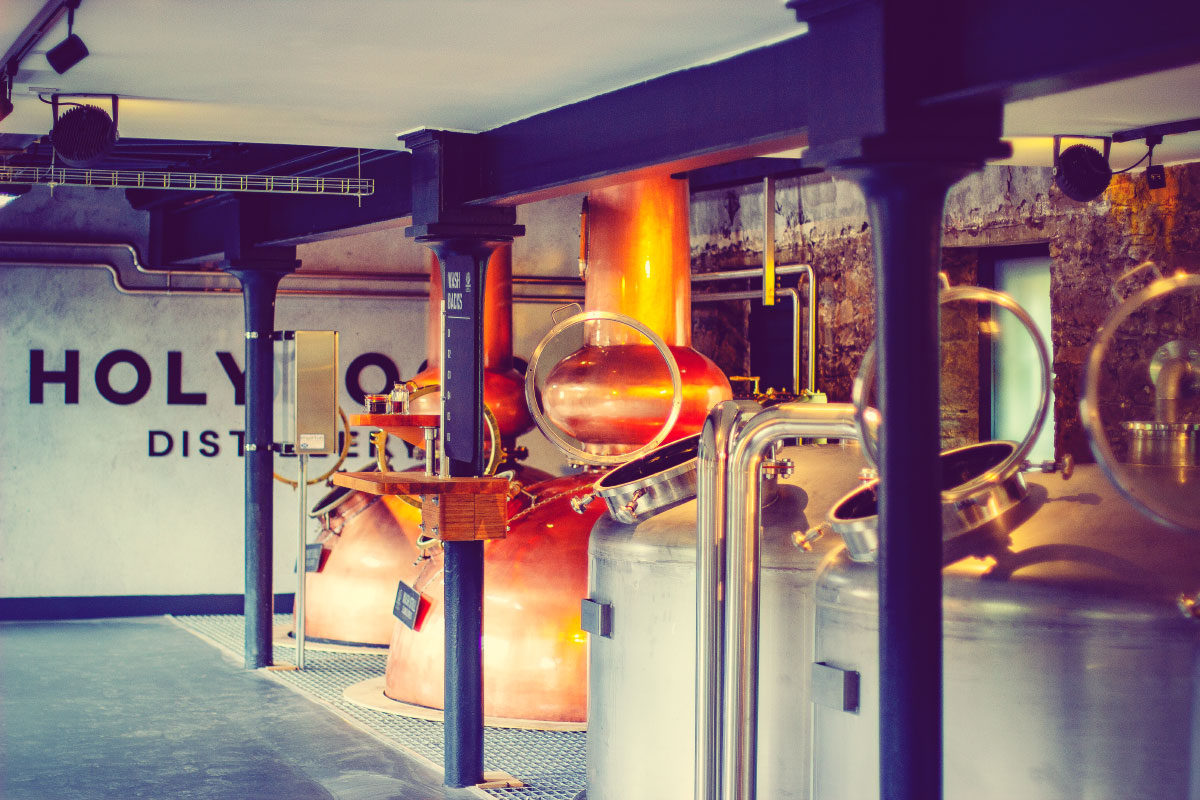
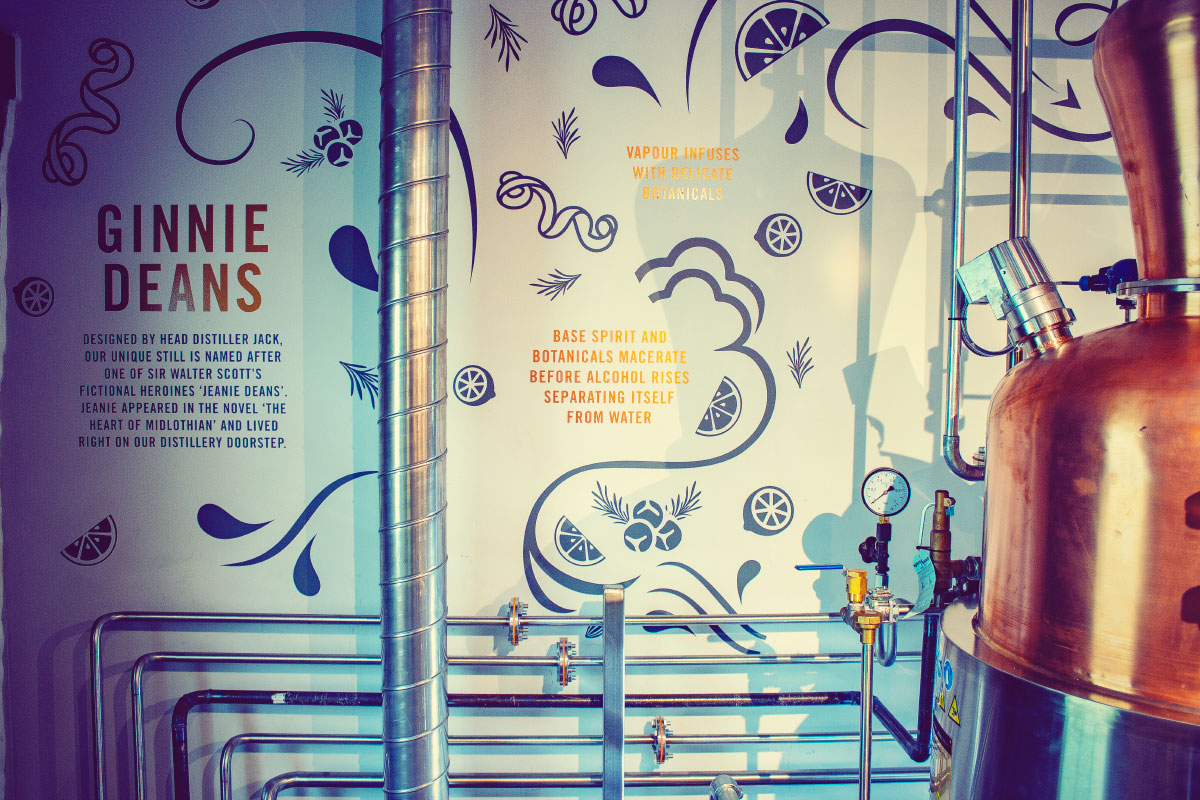
Have the stills all got names? (Anne Baxter)
Our gin still does. Her name is “Ginnie Deans” after the character from Sir Walter Scott’s “The Heart of Midlothian” Jeanie Deans. However, we haven’t got round to naming any of the whisky stills yet! We did suggest they all got named after each of the distillers’ dogs, but if you follow our social media you will see that our head distiller’s dog, Laika, is already a star in the distillery without needing a still named after her!
Elizabeth Machin, Distiller
Everyone raves about Scottish Gins… what do you think makes Scottish Gin so special? (Sand Henderson)
I think Scotland boasts a long tradition with distilling in general. There is also a long history with gin, dating back to the 18th century and the trade of genever from Holland to the Port of Leith. Scotland also has a vast natural environment with a wide range of wild botanicals than can inspire distillers to create new and wonderful flavours in gin.
Elizabeth Machin, Distiller
You can learn more about Holyrood Distillery here.

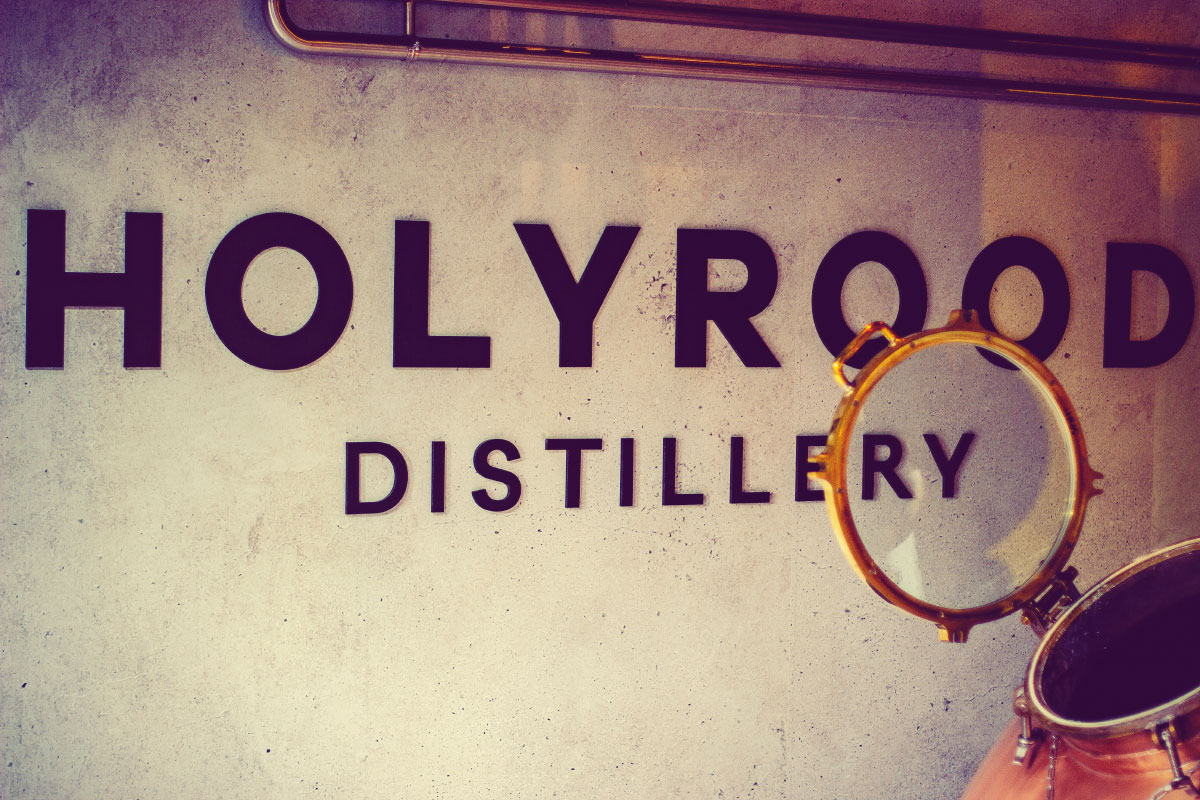
You can learn more about Holyrood Distillery by clicking the links below.